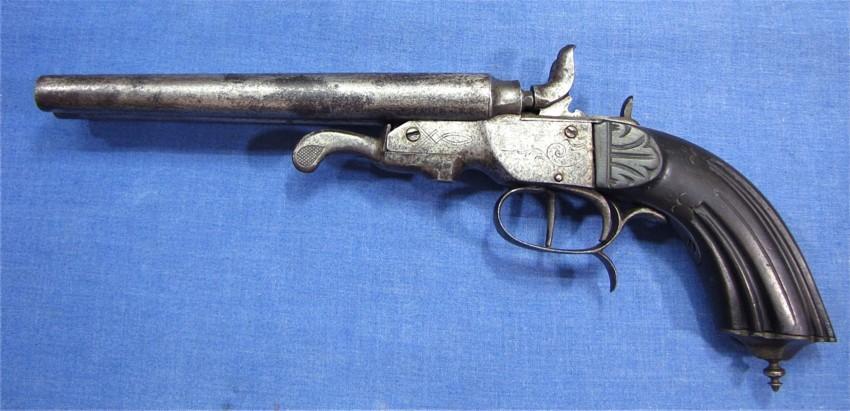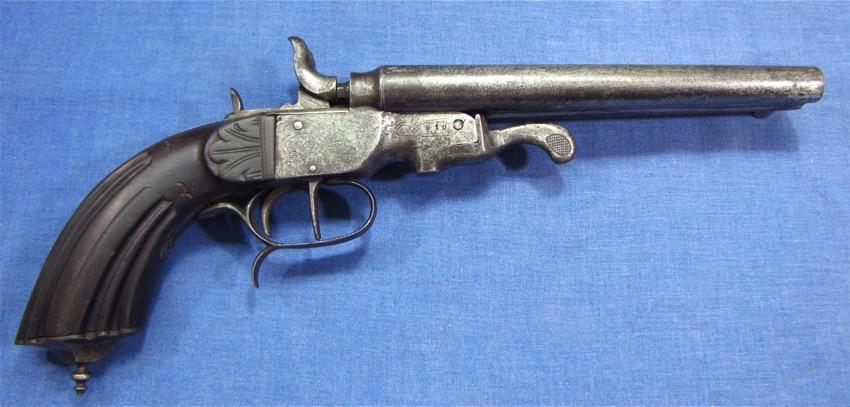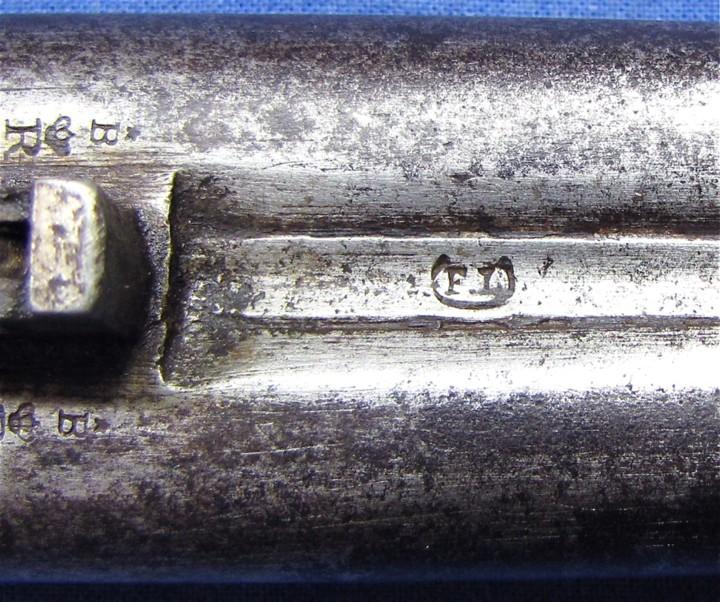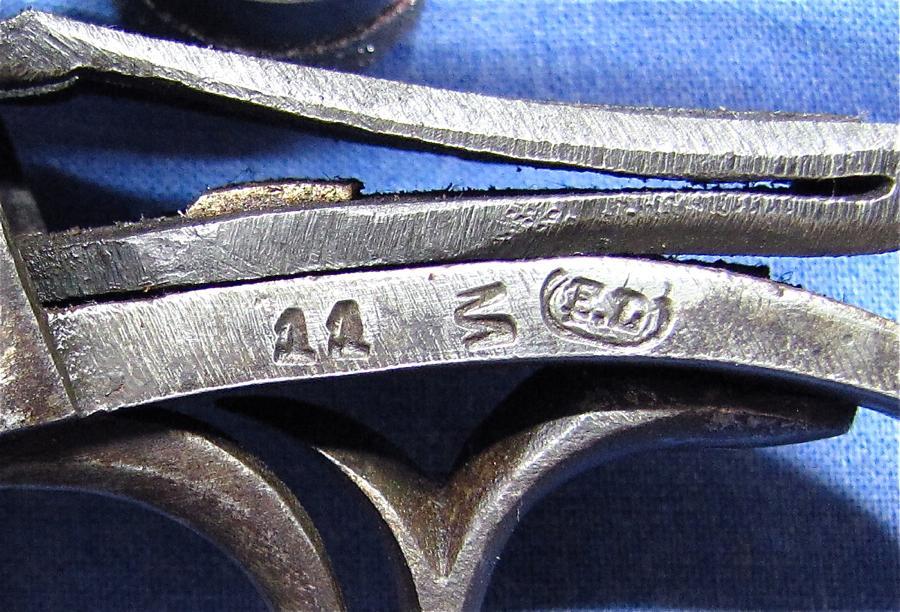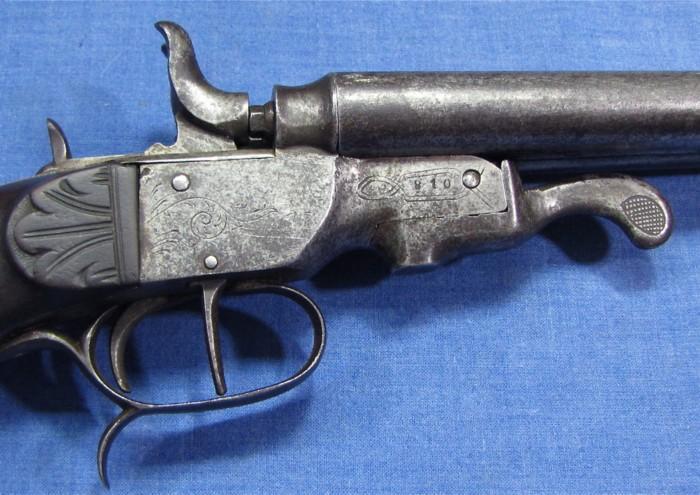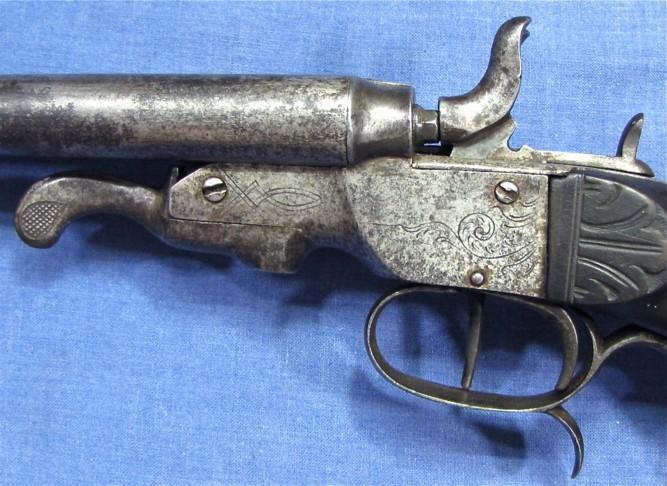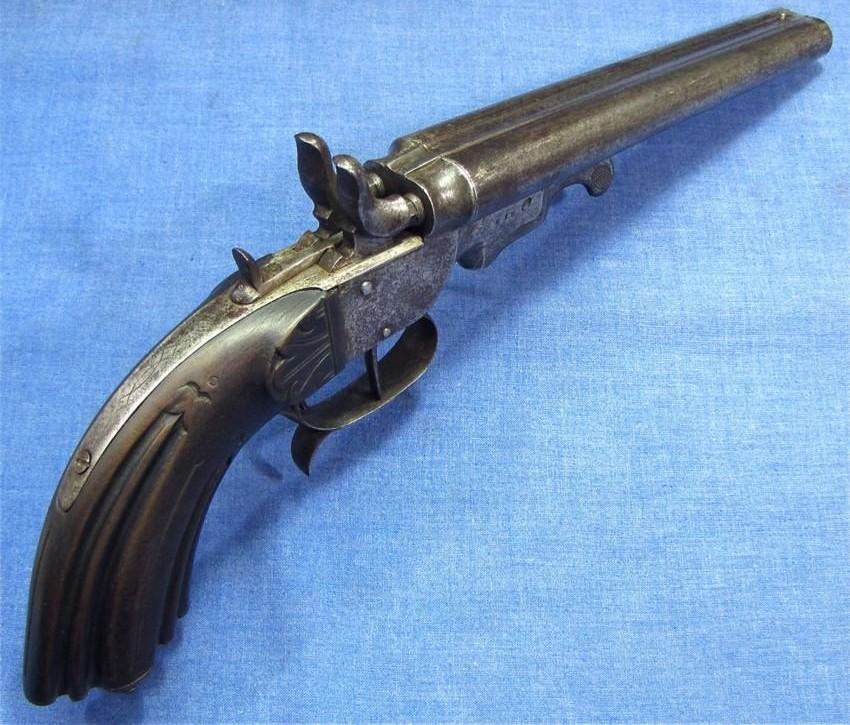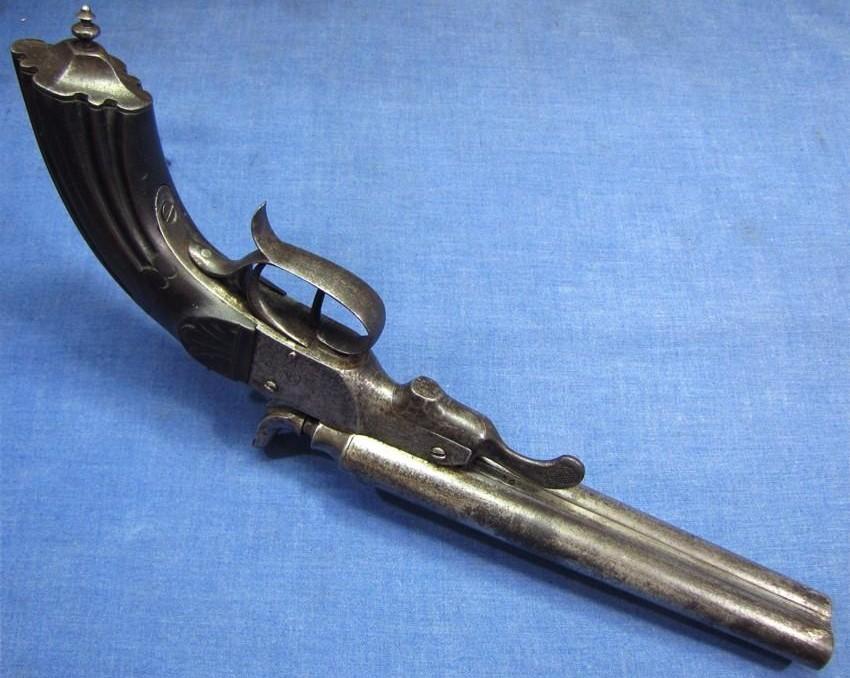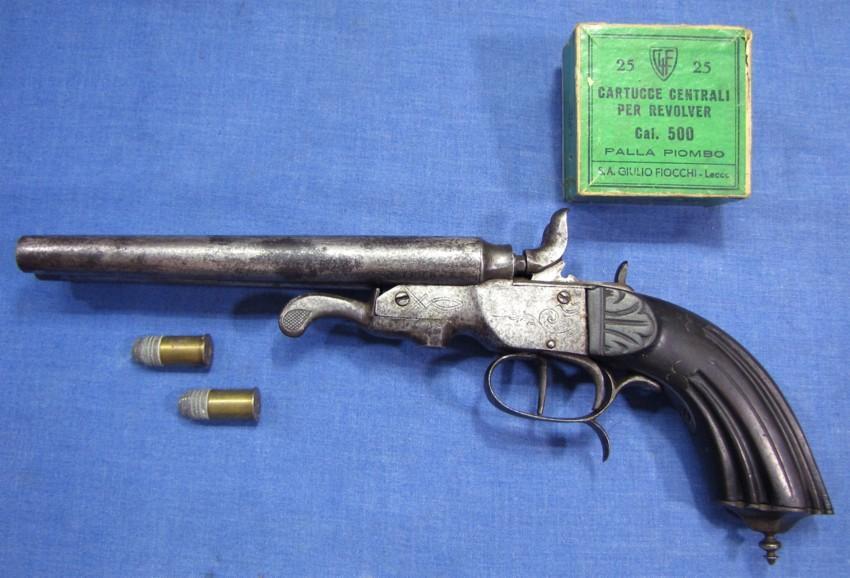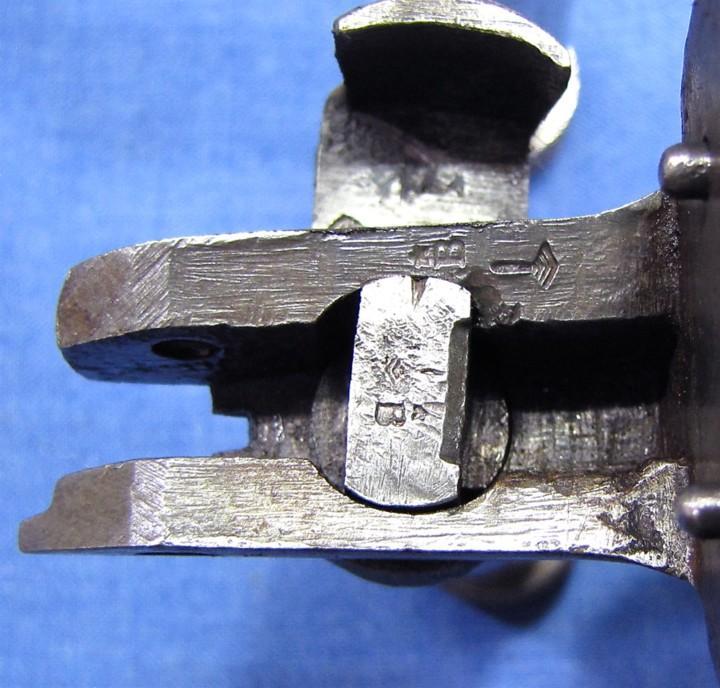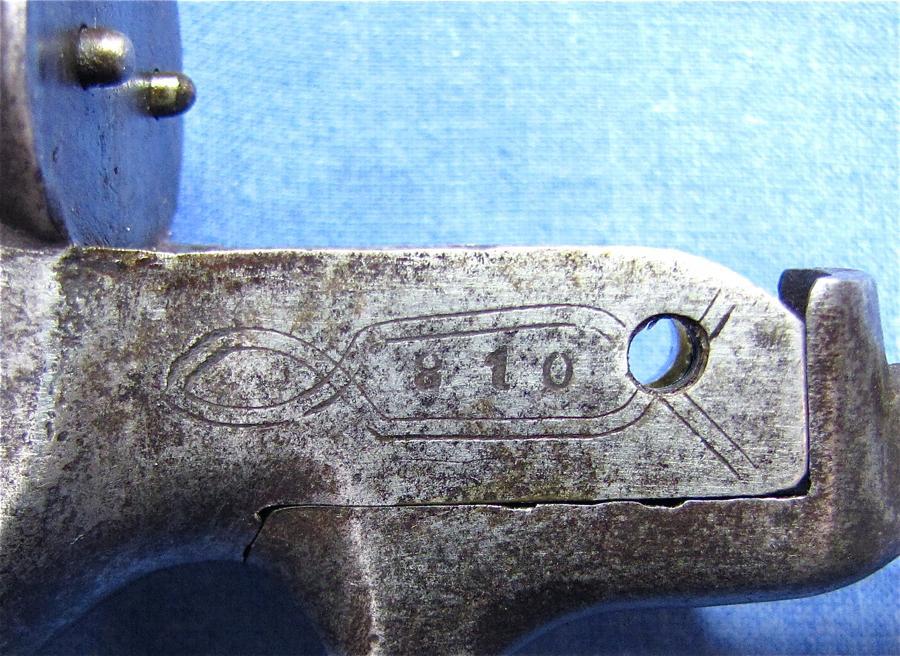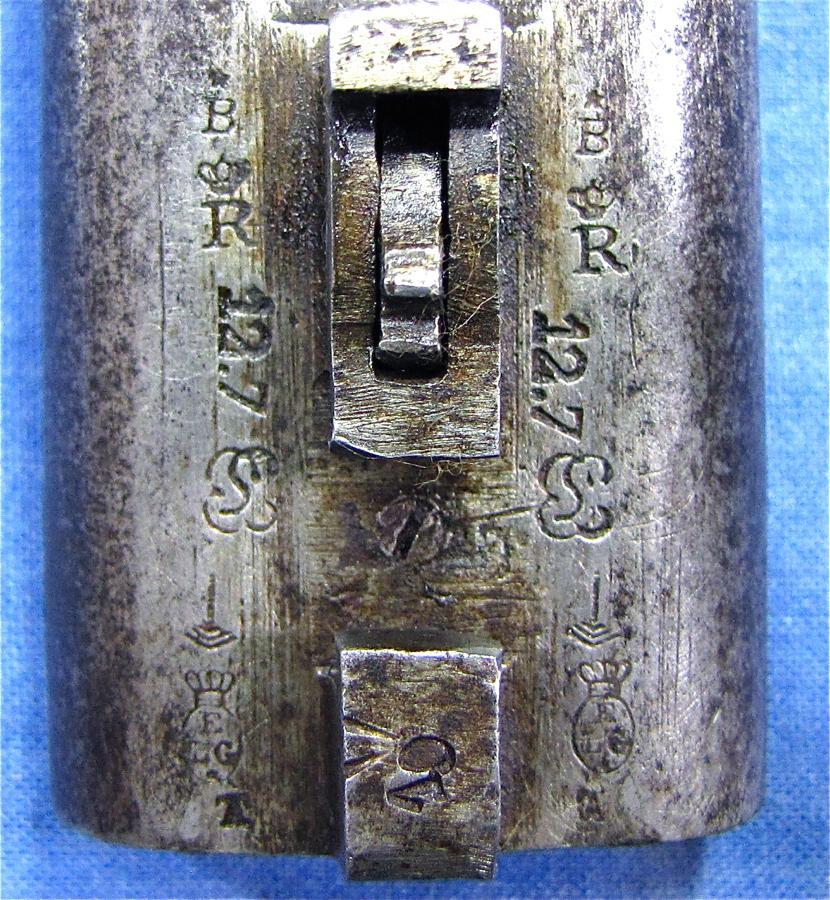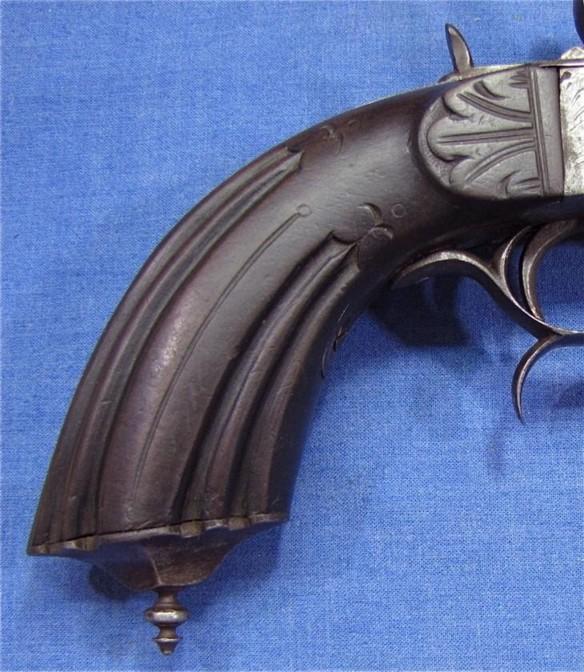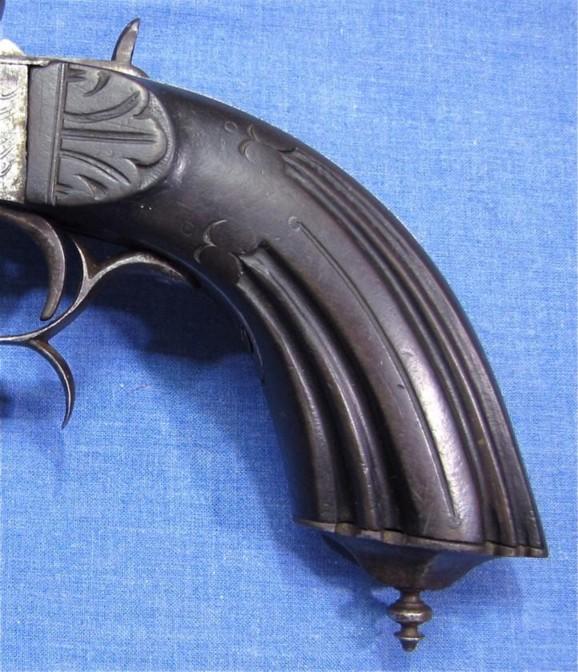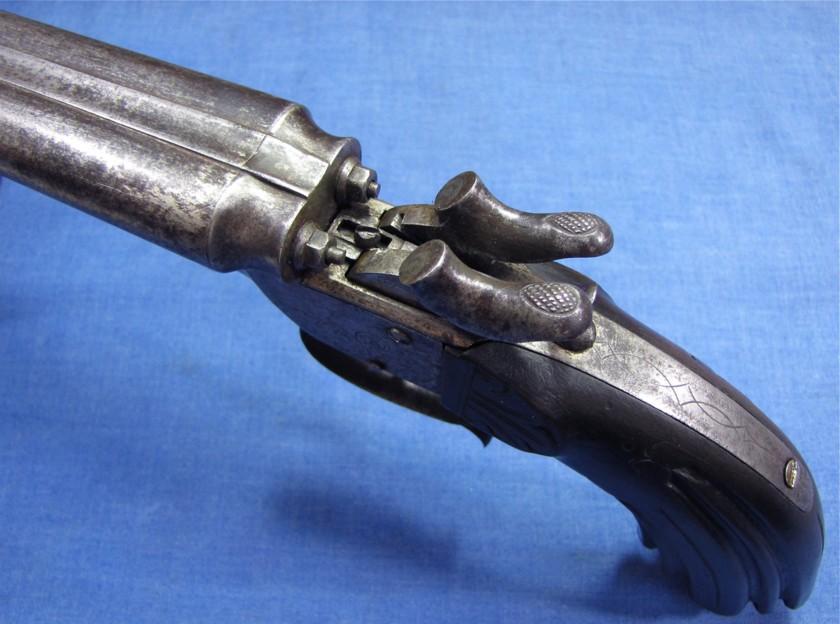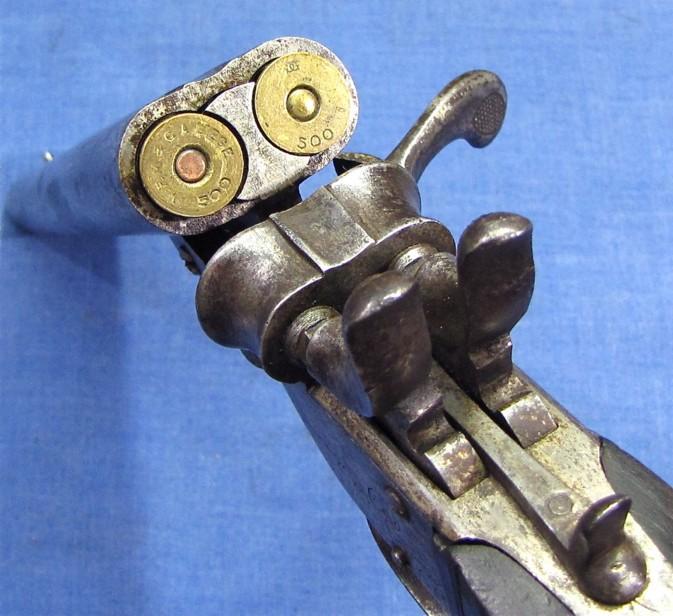Some of the most beautiful work of this craftsman, and many others, are in this book “Liège Gunmakers through their Work. 1800 - 1950”.
For more detail see: LIEGE GUNMAKERS
François Lovinfosse-Hardy
This is a Weybley “top break” revolver of Liège origin.
The weapon breaks forward by pressing the button at the top of the carcass. The
striped barrel is round with a rectangular top stripe.
The front sight in front of it are half-moon. The cylinder is in six locations.
The trigger guard is finger-resting.
The weapon bears the statutory punches of the Liège proofhouse, namely:
ELG* in a crowned oval: definitive acceptance, in use
from 1893 to 1968.
AR flanked and starred : controller’s countermark, in use from 1877 to 1968.
R crowned: striped gun, in use from 1894 to 1968.
3: it would be a serial number.
The weapon also bears the manufacturer’s mark of either:
Lovinfosse-Hardy François,
armourer, rue Hayeneux, 76 in Herstal. He is the author of two Belgian patents
in 1885 and 1909 concerning:
- a new extractor with spring safety.
- an extractor applicable to single shot guns.
He was registered on the Liège proofhouse from 1878 to 1890.
The case was prosecuted by F.
Lovinfosse-Hardy & fils rue Marexhe, 50-54 in Herstal (B.E. 1890-1924).
GG
François Lovinfosse-Hardy
Il s’agit d’un revolver à broche de type Lefaucheux. Le barillet lisse est cranté pour les cartouches à broche. Le chien est à tête plate. La détente courbe est protégée d’un pontet. Le canon est à 8 pans avec un guidon "diabolo". Une baguette métallique est enfoncée sous le canon et est maintenue par un petit système à lame. La crosse est en noyer lisse et se termine par une calotte métallique, un anneau et sa vis-pivot.
L’arme porte les poinçons réglementaires du banc d’épreuves de Liège, soit :
ELG* dans un ovale couronné : acceptation, de 1893 à 1968.
R couronné : canon rayé, en usage de 1894 à 1968.
R* : contremarque du contrôleur, en usage de 1877 à 1968.
L’arme porte également les marques suivantes :
13 : il devrait s’agit du numéro de l’arme.
Deux sabres croisés entourés des initiales F.L. : Cette marque n’est pas reprise en tant que tels dans le livre des marques. Elle me fait penser à une marque déposée par Fernand Lovinfosse armurier à Liège (voir site) qui présente à peu près la même marque mais avec deux fusils croisés ?
GG
On pourrait penser aussi à la marque de Francken & Lünneschloss, mais elle est couronnée alors que celle-ci ne l'est pas, et les dates des poinçons ne correspondent pas !
Alain
François Lovinfosse-Hardy
The weapon
It is about a revolver with central percussion and box frame. The long barrel round and is striped with rectangular front sight. The gauge was not communicated. The cylinder with 5 shots is grooved. The rod swivels on an axis to penetrate in turn in the rooms and to eject the casings. The loading is practiced by the right side door which drops thanks to the action of an internal spring. The stick in wood (Walnut?) is studded.
Punches
The weapon carries the punches of the proofhouse of Liege, namely:
ELG on star in a crowned oval: final acceptance post 1893.
F spangled: countermark of the controller post 1877.
R crowned: rifled bore, of use of 1894 to 1968.
Marks
Two rifles crossed with stars and the initial FL are the mark of the manufacturer François LOVINFOSSE-HARDY street Hayneux, 76 with HERSTAL. This mark was deposited the 15.07.1909. The interested party was active since 1876. He is the author of 2 patents deposited in 1876 and 1885 (see site).
A crossed target B of an arrow challenge me a little because it is not taken again with the file of the manufacturers if it’s not to the manufacturer of Liège Antoine BERTRAND (1886/1900) but the arrow is in the other direction ?
GG

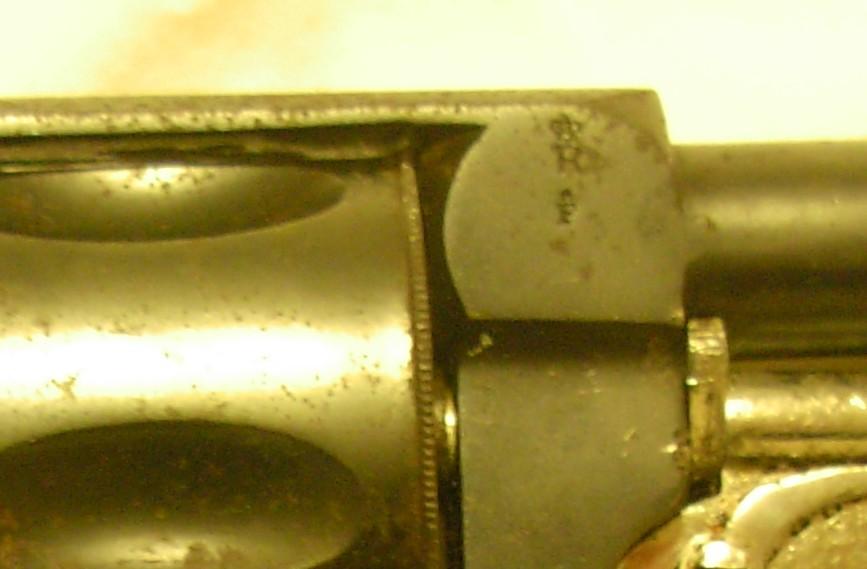
François Lovinfosse-Hardy
Revolver of pocket without apparent hammer named “uneven” in Liege.
It’s with closed frame and central percussion (6.35 mm gauge).
The short and striped barrel is with 8 sides.
It carries a front sight in half-moon.
The cylinder with 5 or 6 blows (non visible on the photographs) is grooved.
The trigger without trigger guard is folding under the console.
A safety is placed on the left side.
The loading is practiced by a side door dropping by the action of an internal spring.
Unloading is practiced using the metal rod swivelling on axis and which one introduces into the rooms.
The stick consists of two plates out of wooden blackened and squared, they are joined together by a screw and two rivet washers.
Punches
Z spangled: countermark of the controller post 1877.
R crowned: rifled bore post 1894.
PV surmounted of a stylized lion: test with the powder without smoke, of use of 1898 to 1968.
Miss the ELG on star in a crowned oval (see internal face of the barrel) which indicates the final acceptance of the test post 1893.
Marks
The mark struck an amount of stick and which seem to represent an oval lying and two letters inside, FT or FL, is not very readable thus not very identifiable.
In any assumption, it could be a question of:
François LOVINFOSSE-HARDY, arms manufacturer street Hayeneux, 76 in Herstal. It deposited two patents between 1885 and 1909.
The five triangular file strokes on an amount of stick are probably marks of workshop and more particularly of “equipor”.
GG
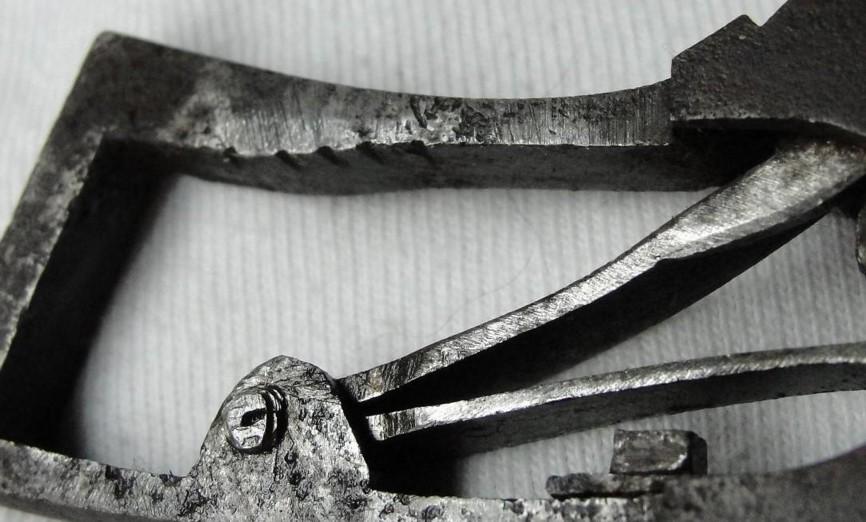
François Lovinfosse-Hardy
The weapon
Pistol known as “Scottish” with two barrels in table, dropping using a key of the Lefaucheux type.
The juxtaposed barrels are round and striped of gauge 500 (12,7 mm).
There are no sighting devices.
The stick with “palmettos” of the rebirth type seems to be out of ebony and the cap with baluster.
The trigger guard protecting the trigger is with rest-finger.
Punches
The weapon carries the punches of the proofhouse of Liege, namely:
ELG on star in a crowned oval: acceptance post 1893.
B spangled: countermark of the controller post 1877.
R crowned: rifled bores, of use of 1894 to 1968.
EL in English letters: provisional test, of use of 1852 to our days.
Peron: inspection post 1853.
12,7: gauge in mm, of use of 1889 to our days.
The manufacturer
Mark FL in a cartouche belongs to the firm LOVINFOSSE-HARDY, François, manufacturer of weapons street Hayeneux, 76 in Herstal, author of two patents between 1885 and 1909.
The weapon as mentioned was of course obsolete in Europe at the beginning of the XXe century but was still very appraisal in South America probably for its operation without fault.
In appendix, an extract of the Lovinfosse catalogue showing this type of weapons.
GG
